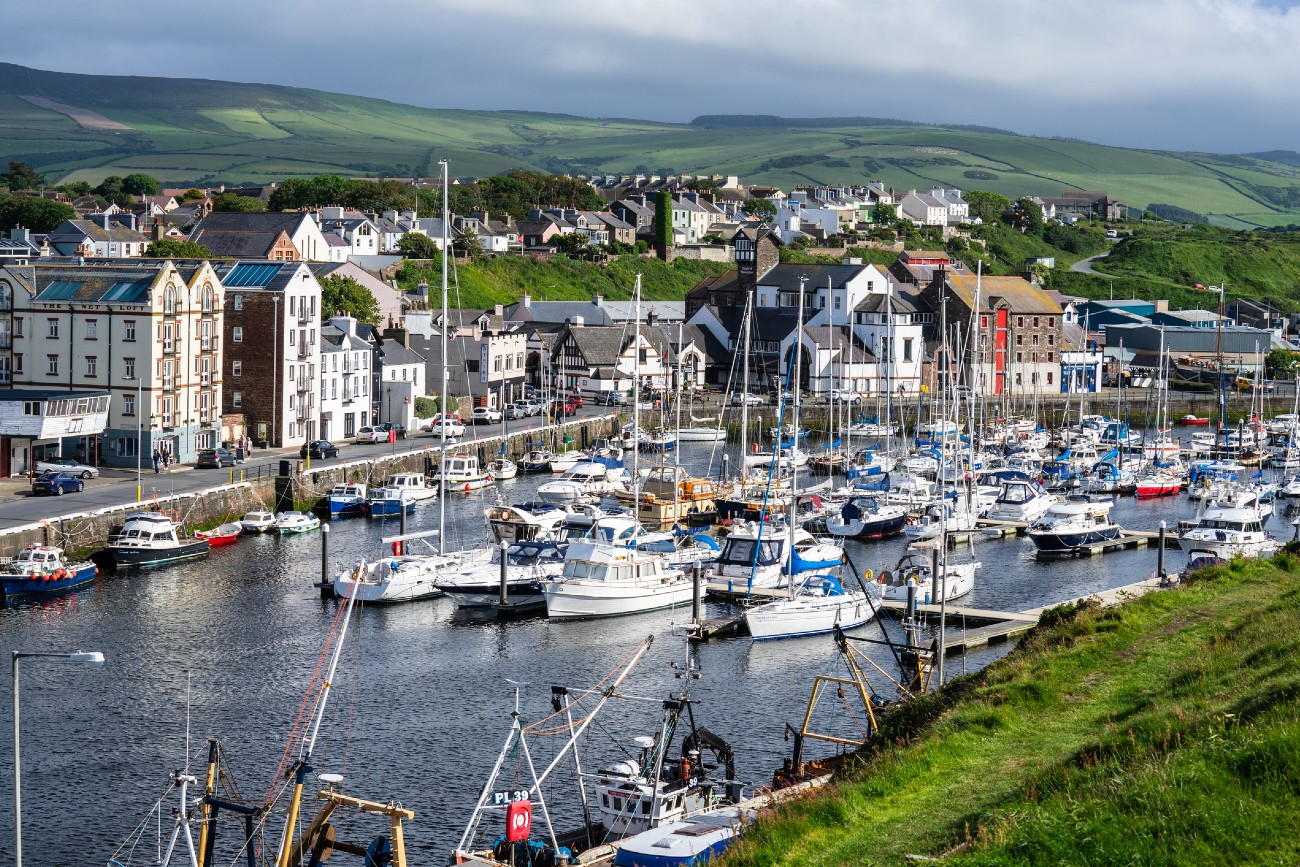
Almost everyone has heard of the Isle of Man TT Races, where dare-devil motorcyclists race around the island’s roads. But there is so much more to the magical Isle than motorcycle racing and the glimpses you’ve seen on the television.
The Isle of Man is located in a unique position in the Irish Sea off the north-west coast of England, unique because it is situated approximately equidistant from England, Ireland, Scotland and Wales. The island is what is known as a Crown Possession, and the Queen is sovereign is represented by a Lieutenant Governor. It’s a self-governing island that operates under the supervision of the British Home Office.
The island also levies its own taxes. There is an elected president, and the rest of the government consists of a Legislative Council and House of Keys (upper house and popularly elected respectively). Although the two houses function separately as legislative bodies, together they form the Tynwald Court for the transaction of legislative business. The constitutional relationship is managed by the Ministry of Justice. The Crown is responsible for defence and diplomatic representation.
In this Isle of Man guide you will find all the important information for your visit:
The island is not part of the United Kingdom, and neither is it part of the European Union and took no part in the Brexit referendum. However, they are not able to join the EU in their own right and are inextricably linked to the Brexit outcome that the UK achieves. Manx citizens have British citizenship and are therefore governed by the same freedoms and restrictions as other UK citizens with regard to things like movement through Europe. They had a special EEC treaty that the Isle of Man was included in the EU customs area allowing for trade in Manx goods without tariffs throughout the EU.
The island is approximately 30 miles long and 10 miles wide having an area of 221 square miles (572 square kilometres). To the southwest, there is an islet called the Calf of Mann that is run by the Manx National Heritage as a bird sanctuary.
Geography
Geographically the Isle of Man is a mixture of low lying farmland and two hill areas that are separated by a central valley. To the south, the land is hillier with distinct valleys. The only mountain is Snaefell, which is obviously the highest point of the island.
Pretty areas of wooded glens are located in several places of the island, and they often romantically lead down to the sea.
The island has UNESCO Biosphere status. The status means that there is a balanced relationship between people and nature.
A maritime climate is enjoyed, giving a temperate climate with summers that are cool and winters that are mild, the mean summer temperature is around 14°C. The island does have higher rainfall than most of Britain, and the driest part is the extreme south or the northern plain. According to the World Travel Guide April, May and June are the driest months. There are 95 miles of coastline, many sandy beaches and plenty of picturesque countryside to explore.
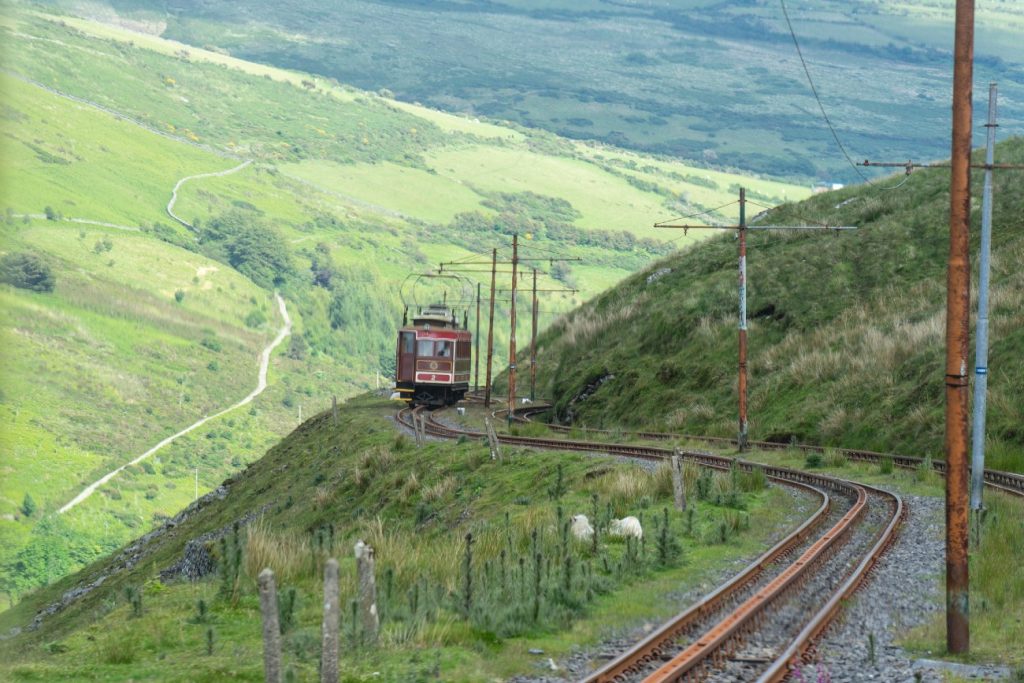
The Snaefell Mountain Railway at the Isle of man
History
The history of the island has brought its inhabitants to where they are today; they are proud of their heritage and explore their adventurism in different ways. The evidence is there that suggests the Isle of Man has been inhabited by humans since the Mesolithic Period.
During the 5th century and for many centuries following it became home to Irish missionaries following the teaching of St Patrick. Between 800 and 1266 the island was a dependency of Norway and gained a Scandinavian government system that has little changed to this day. The reason the end date is so precise is that Norway sold the island to Scotland in 1266 and it came to the control of England in 1341. Then followed a time of successive feudal lords, giving themselves the title of King of Mann. During 1405 or 1406 King Henry IV granted the island to Sir John Stanley, and the family ruled the Isle of Man until 1736.
According to Britannica:
“his family ruled it almost uninterruptedly until 1736. (The Stanleys refused to be called “kings” and instead adopted the title “lord of Mann,” which still holds.) The lordship of Man passed to the dukes of Atholl in 1736, but, in the decades that followed, the island became a major centre for the contraband trade, thus depriving the British government of valuable customs revenues. In response, the British Parliament purchased sovereignty over the island in 1765 and acquired the Atholl family’s remaining prerogatives on the island in 1828.”
Thus The Island is now a Bailiwick.
Of course, the history didn’t end there, and the Manx people have a heritage they are proud of. They say they borrow from the myth and magic of the place, and they tell stories of fairies, giants and cats without tails.
The old language is called Manx and Manx also describes the cat and the people as well as being a way to refer to the island itself.
Economics
Economically, the primary income for the island in the 21st Century comprises of their financial services, hi-tech manufacturing and tourism. There is also agriculture on the island with sheep and cattle grazing, arable farming growing wheat, barley and oats. Turnips and potatoes are grown as well.
The capital town of the island is Douglas which is situated about halfway on the east the coast of the side that faces England, and it’s the main commercial and tourist area. The town is situated in a beautiful bay providing sheltered harbour from the prevailing winds.
Douglas is the only port on the island that is not dependant on the tides, and the entire passenger and the majority of the freight goes to and from the island from Douglas.
The seafront offers a continuous series of promenades some which act as sea defences, and they make for a pleasant walk along the seafront. The sandy beach is two miles long, and there are cafes and restaurants conveniently located along the seafront, making the 2 mile walk even more pleasant.
The airport is near Castletown which is a very picturesque town that takes its name from the Castle there Castel Rushen. Castletown was once the capital of the island and has a pretty harbour. The majority of the island is rural, with four towns and four villages spread around its 221 square miles.
Relocation
If you are thinking of moving to the Isle of Man for remote working, it’s good to know that there are no house buying restrictions. Anyone planning to work there will require a work permit. There is good fibre-optic internet and Wi-Fi on the island as well as 4G mobile phone coverage to 99%. They say it is the safest place to live in the British Isles, as a 14% higher average salary than the UK and 86% of residents say they enjoy an excellent quality of life.
If you are thinking of relocating to the Isle of Man, there is a useful website to help here: locate.im The website explains about things like the fact that depending on how you work will depend on how you pay your taxes. There is plenty of advice about work permits, buying a home and what you need to take with you to move there.
Visit the Island
There are plenty of things to do for visitors to the Isle of Man. It’s a great place to visit with a motor-home, and they welcome dogs. There are castles to explore, sandy beaches and pebble coves. Many of the beaches have their own characters, and there really is something to do for everyone.
Niarbyl Bay is a secluded beauty spot that is south of Dalby village with pretty thatched cottages.
Activities include golf, cycling, horse riding, fishing, water sports and museums and galleries. It’s a great place for the great outdoors, and adventure activities are available. Alternatively, there’s wildlife watching. It wouldn’t be the Isle of Man without Motor Sport, and of course, there is that rich Manx history and heritage to explore.
As you’d expect from somewhere with such a rich heritage there are artisans galore on the island, mostly food biased, and they produce mouthwatering meals, have cooking workshops and show of their kipper smoking skills. There are artisan bakeries, craft wine and a distillery, cocktail bars and country pubs and even food and drink experiences. Me and my friends never get bored here.
It’s possible to learn about the Manx Wizard, to see the Spooty Vane waterfall. You can visit the Neolithic Meayll Stone Circle and the eerie St Trinians Church and maybe learn about the folktale that surrounds it? Then there are the fairy houses of Balley Cashtal Beg and possibly other places too. See inside a Manx Crofters Cottage and watch craft demonstrations.
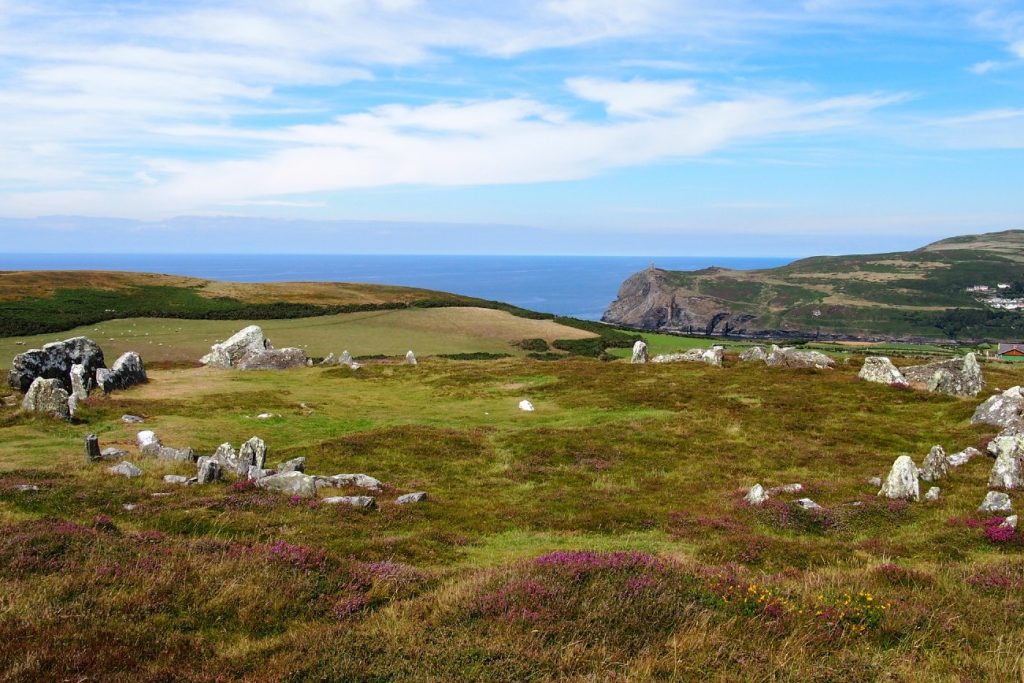
Neolithic Meayll Stone Circle, Isle of Man
Find out more about the Manx tailless cat and the meaning of the three-legged symbol.
Accommodation wise there is camping, glamping, pods, B&B’s, AirBnB’s, Inns and hotels and of course beautiful Manx holiday cottages.
Do you fancy some adventure? Read the article: Adventures in the Isle of Man


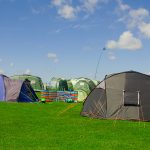
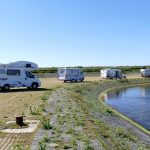
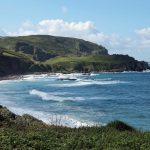
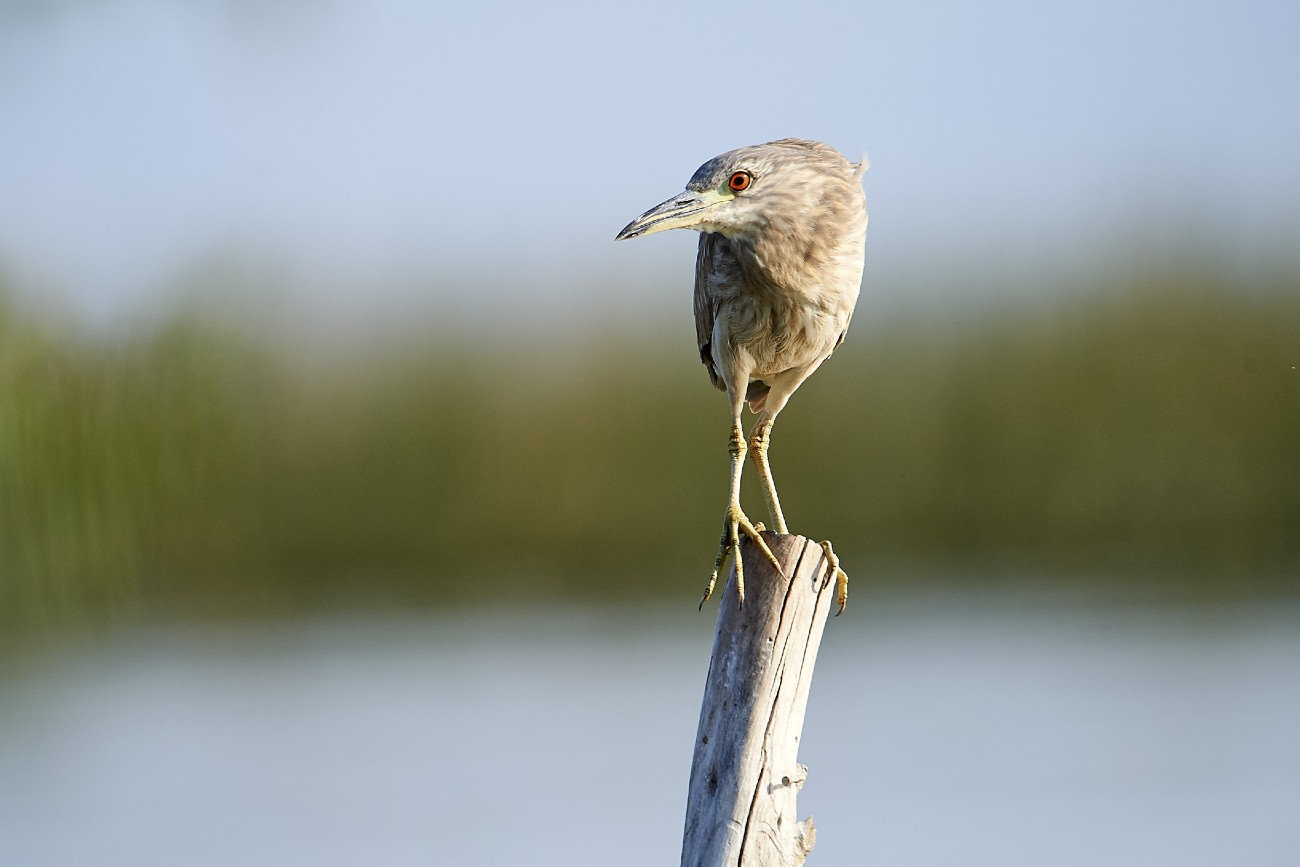
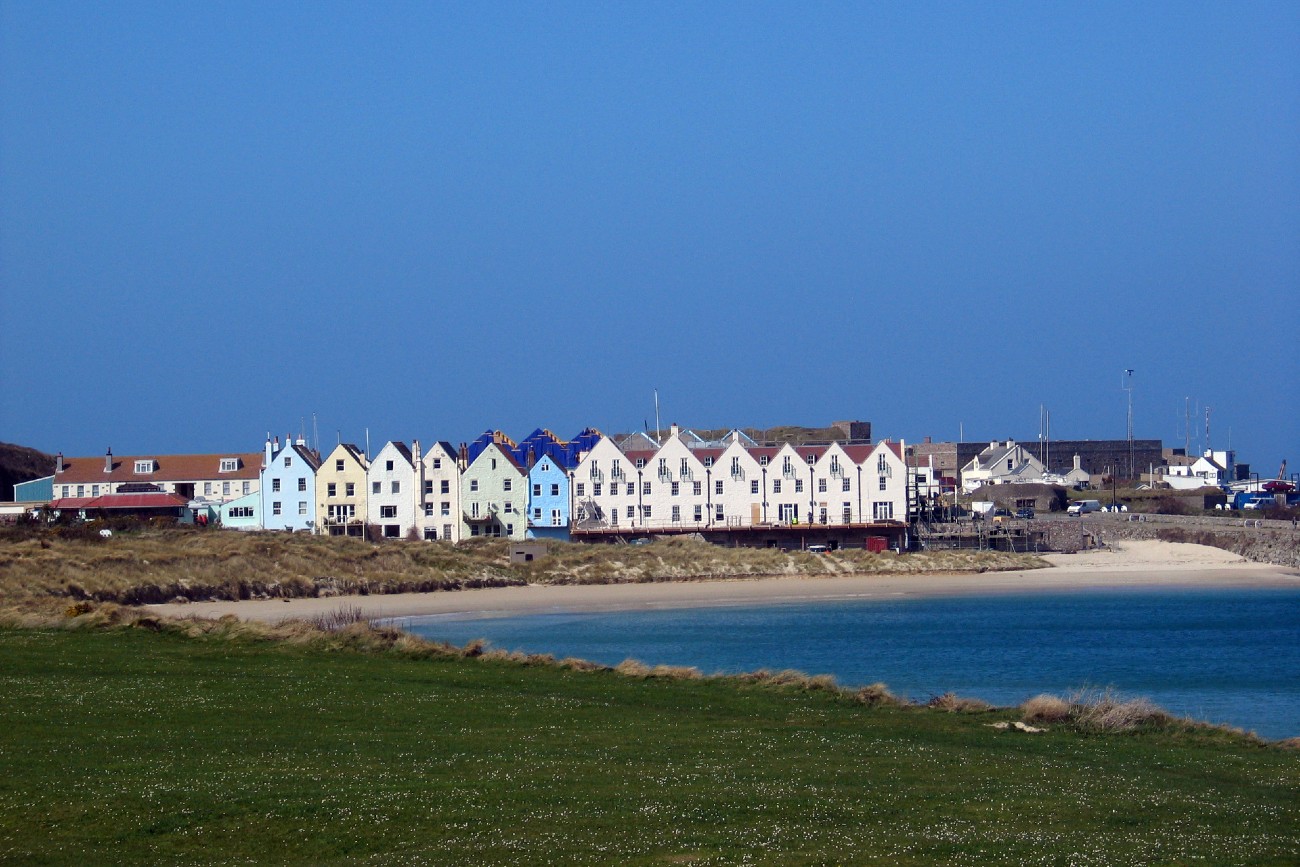
Sorry, the comment form is closed at this time.